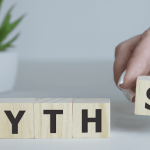Research suggests that 95% of purchase decisions are made subconsciously, making how consumers perceive your product and brand, and their value crucial to their decision to make a purchase.
Summary
• price perception is the subconscious value (monetary or otherwise) perceived by your customers for your brand and its product.
• Factors like price-quality relationship, prestige sensitivity and sale proneness of your products, and the value and price consciousness of your customers influence their price perception.
• Retailers can influence the price perception of their customers by understanding the customers better, personalising marketing efforts, and monitoring their competitors.
|
What is price perception?
Simply put, price perception is how much consumers think your product is worth, monetarily. The perceived price of your product goes beyond its cost. It also includes the value it adds to the person purchasing, owning, or using the products and this value does not necessarily have to be the same as the cost of the product.
So, what affects a customer’s perceived value of a product or service and how can you influence it to increase sales and revenue?
Factors that influence price perception
Price-Quality Relationship: A significant number of customers consider price an indicator of quality and believe a product that is priced higher signifies higher quality. Furthermore, every customer has their own perceived price of their product that is defined by their purchase power and product expectations. If you price lower than the customers’ perceived price of the product, there is a good chance they’ll think the product is of inferior quality.
This does not mean that you should price your products higher than they are worth. Quoting a high price for a product that might not stand up to that value will lead to a loss of trust in your product and brand. On the other hand, studies show that a price increase in combination with a proportionate increase in the quality or value of the product will increase first-time purchases and increase loyalty and existing customers.
Price-Consciousness: Price-conscious customers are those who look to pay the best price for a product and therefore consider multiple options and check for their prices before deciding to make a purchase. For these customers, price is a very important factor in making their purchase decision.
Again this does not mean they are looking to find the cheapest option but that they are looking to pay the price that is closest to their perceived value of the product.
Value-Consciousness: Value-conscious customers are those who consciously or subconsciously perform a cost-benefit analysis before making a purchase decision. These customers are satisfied when their perceived value is equal to or higher than the price they paid for the product.
These customers are also likely to repeat the purchase or stay loyal to the brand if they are satisfied with the value they receive. In the case of value-conscious customers, it is important to not undermine the value of your products to clear stock or run promotions as this will confuse their price-value perception and can cause mistrust in your brand.
Prestige Sensitivity: While some consumers consider buying a higher-priced product as losing money, some perceive it as a status symbol. Products that are purchased not for their value for money but because owning the product increases their status among their peers are considered prestige-sensitive.
These products are considered to be a symbol of class and wealth however, what’s considered prestige sensitive by a customer depends largely on their socioeconomic situation and group.
Sale proneness: Sales, promotions, or discount periods significantly influence customers’ price perception. If you run promotions too often or for an extended period, one of 2 things could happen. Either the customers will wait for the sale period to purchase the product, this is if the sale price matches or exceeds the value of the product, or it will confuse the customer and create mistrust in your product or brand because of how below your actual price you are willing to sell the product for.
It is, therefore, essential to plan and time your promotions and promotion periods well to ensure that the sale proneness does not affect the perceived price of your product negatively.
Domestic-foreign product sensitivity: This is where the country of origin of the product or brand or both affects the price perception of the product. For instance, the perceived price of an automobile manufactured by a German brand in Germany is likely to be higher than an automobile manufactured in China or Vietnam.
3 ways to influence price perception
Know your customers: To influence the price perception of your customers, you need to understand what influences their price perception. Data regarding your customers’ purchase power, taste, past purchases, demographics, etc can help you understand this.
For instance, studies suggest that older customers are more likely to make more purchases during sale periods than younger customers. So understanding your audience’s age group can help you plan your promotions accordingly and vice versa.
Personalise your marketing efforts: Now that you know which factors influence your customers’ price perception, you can personalise your efforts to reach the customers you want to acquire and retain your existing customers.
For example, a customer buying an iPhone is probably not buying it for the price but for the value it provides in terms of social status and quality. This means the marketing efforts should communicate how it elevates the customers’ social status and how its features add value to their day-to-day life.
Monitor your competitors: Customers are very savvy and research 90% of their purchases online before purchasing, irrespective of whether they are purchasing the products online or offline. This means your customers are probably aware of your competitors and their products.
Understanding where you stand compared to your competitors in terms of price, sales, promotions, stocks, and customer experience can help you understand their tastes, preferences, and behaviour.
Price monitoring software like pricechecker helps you get all this data and then some, promptly and accurately so you can respond to changes in the market quickly and in a relevant manner. They also help you understand the effects of price on the sale of the product or product segment and thereby execute strategies to influence customer behaviour through price changes.





